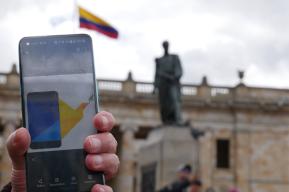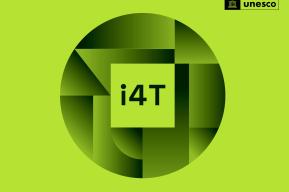Article
The Imperative need to protect women journalists in Peru

As part of the 16 Days of Activism around the International Day for the Elimination of Violence against Women, UNESCO Peru held an event "Protection of Women Journalists" on 30 November 2022 in Cusco. The goal of the event was to raise awareness and visibility about how important it is to implement international instruments on freedom of expression and the safety of women journalists.
The National Association of Journalists and the Association of Social Communicators Calandria co-organised the event, which was aimed at government representatives and journalists. It was supported by the Multi-Donor Program on Freedom of Expression and Safety of Journalists, a UNESCO programme that strengthens the Organization’s work on issues of freedom of expression, safety of journalists, media development, and media and information literacy.
Numerous assaults, limited visibility
In Peru, women journalists are constantly on high alert due to increasing attacks, harassment and normalisation of mistreatment. The attackers’ intention is often to silence their victims, which is the reason for the low visibility of these crimes.
UNESCO Representative in Peru Guiomar Alonso noted the rise in online and offline attacks on women journalists in the country, including harassment, sexist hate speech, physical assaults, and even murder.
The recent report of the UNESCO’s Director-General on the safety of journalists and the danger of impunity, shows that the number of women journalists murdered in the world has increased from 9% in 2019 to 11% in 2021.
The event, attended by law enforcement, members of the justice system and civil society, featured UNESCO’s 2021 report "The Chilling" which highlights that nearly three quarters of journalists have experienced online assault.
The report’s figures match the scenario of Peruvian female journalists who claim to be victims of online and offline abuse they face every day throughout investigations and fieldwork.
Knowledge of international instruments related to freedom of expression and journalists safety, with a focus on women journalists, is essential to create a free, safe, independent and pluralistic media environment, as well as to defend freedom of expression and media freedom.
Decentralized platforms where experts can offer recommendations based on each country and region’s context can raise awareness of the attack’s gravity and the implications of undermining press freedom and freedom of expression. This could make a big difference in how cases of violence and impunity are handled. During the event, women in academia and journalists from different news outlets spoke up and called for a set of rules to be followed when women journalists are attacked.
In the 2020 Global Survey on Online Violence against Women Journalists, UNESCO and the International Center for Journalists (ICFJ) found that 73% of 714 women journalists from 125 participating countries have been attacked online. According to the study, women journalists who faced other forms of prejudice such as racism and homophobia, were more likely to be targeted and suffered larger consequences.
In light of the urgent need to protect women journalists in Peru and beyond, both online and offline, society must progressively understand the risks faced by women journalists on a daily basis. To counter these attacks, we must collaborate with allies to implement good practices and share recommendations.
The original article was published in Spanish by UNESCO Peru Office.
About the Multi-Donor Program on Freedom of Expression and Safety of Journalists
The Multi-Donor Program on Freedom of Expression and the Safety of Journalists strengthens UNESCO's work at the global, regional and country levels by providing funds to emerging priorities and the most pressing needs to achieve its mandate on freedom of expression, media development and media and information literacy.







